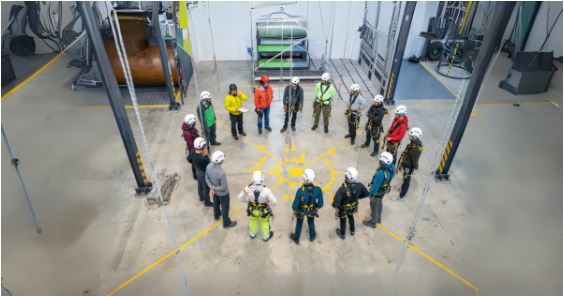
Level 5 Strategic Safety Planning and Leadership in General Industry
Course Overview
The Level 5: Strategic Safety Planning and Leadership in General Industry course is designed for senior professionals who aim to develop and implement comprehensive safety strategies within their organization. This advanced program focuses on strategic planning, risk management, and leadership techniques to create long-term, sustainable safety improvements. Participants will learn how to align safety goals with organizational objectives, manage safety programs effectively, and lead teams towards a culture of safety excellence. This course is ideal for safety managers, directors, and senior HSE professionals in industrial sectors.
Benefits
- Comprehensive Strategy Development: Learn to create and execute effective safety strategies for long-term impact.
- Advanced Leadership Skills: Gain essential leadership techniques for leading safety programs and influencing organizational culture.
- Risk Management Mastery: Understand the core principles of managing risks and ensuring compliance across multiple departments.
- Career Progression: Enhance your profile for high-level roles in health, safety, and environmental management.
Learning Outcomes
Upon successful completion of this course, participants will:
- Understand the principles of strategic safety planning and their application in general industry.
- Develop skills to lead, manage, and improve safety programs at an organizational level.
- Identify and evaluate organizational safety risks using advanced risk management techniques.
- Align safety objectives with organizational goals, ensuring safety is integrated into overall business strategy.
- Lead teams to embrace safety leadership and a culture of continuous improvement in safety practices.
Study Units
- Introduction to Strategic Safety Planning
- The importance of aligning safety planning with business objectives.
- Developing safety strategies for risk reduction and operational efficiency.
- Leadership in Safety Management
- Techniques for leading safety teams and ensuring stakeholder engagement.
- Fostering a leadership mindset that prioritizes safety at all levels.
- Risk Management and Safety Compliance
- Advanced risk assessment and management techniques for industrial environments.
- Ensuring compliance with safety regulations, standards, and laws.
- Integrating Safety into Organizational Culture
- Building and maintaining a safety-first culture across all levels of the organization.
- Overcoming resistance to change and driving engagement from employees and leadership.
- Continuous Improvement in Safety Programs
- Utilizing data and performance metrics to drive safety program improvements.
- Implementing feedback loops and monitoring systems to evaluate program effectiveness.
Career Progression
This qualification opens up opportunities for leadership positions in safety management, including:
- HSE Director: Oversee and manage health, safety, and environmental strategies for the organization.
- Safety Program Manager: Lead the development and execution of safety programs across multiple departments.
- Senior Safety Consultant: Provide expert safety advice and strategic planning for industrial organizations.
- Corporate Safety Leader: Drive the safety agenda at an organizational level, ensuring alignment with corporate goals.
Our assessment process is designed to ensure every learner achieves the required level of knowledge, skills, and understanding outlined in each course unit.
Purpose of Assessment
Assessment helps measure how well a learner has met the learning outcomes. It ensures consistency, quality, and fairness across all learners.
What Learners Need to Do
Learners must provide clear evidence that shows they have met all the learning outcomes and assessment criteria for each unit. This evidence can take different forms depending on the course and type of learning.
Types of Acceptable Evidence
Assignments, reports, or projects
Worksheets or written tasks
Portfolios of practical work
Answers to oral or written questions
Test or exam papers
Understanding the Structure
Learning outcomes explain what learners should know, understand, or be able to do.
Assessment criteria set the standard learners must meet to achieve each learning outcome.
Assessment Guidelines
All assessment must be authentic, current, and relevant to the unit.
Evidence must match each assessment criterion clearly.
Plagiarism or copied work is not accepted.
All learners must complete assessments within the given timelines.
Where applicable, assessments may be reviewed or verified by internal or external quality assurers.
Full learning outcomes and assessment criteria for each qualification are available from page 8 of the course handbook.
Top Courses
No results found.
Related Courses
Let's Get in touch
Deleting Course Review
Course Access
This course is password protected. To access it please enter your password below:



